September 30, 2017 at 11:41 am
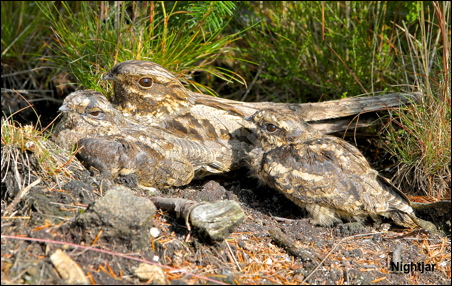
On the 2nd August 1980 I came across a female Nightjar brooding two large young on Chat Moss. In those days it was the only place in Greater Manchester where Nightjars bred and soon after, through peat extraction, Nightjars ceased to breed in the County. During the thirty seven years since 1980 very few Nightjars have been seen in Greater Manchester but this year it all changed. A pair of Nightjars have been seen all summer in the east of the County and there is every indication that they have bred. Lets hope they return next year and become regular breeding birds once again. This week’s blog photo and gallery are of a pair that bred just over the County boundary three years ago. Click here
September 23, 2017 at 8:12 pm
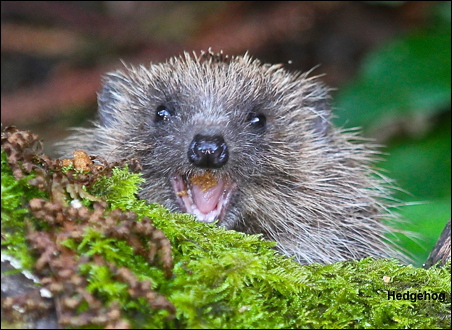
During the last couple of months, when darkness falls over the garden and all the feeding birds have gone to roost, other visitors begin to appear. Hedgehogs have been coming to feed below the bird feeders and have taken readily to food put out specially for them. We have had a minimum of five different Hedgehogs feeding and interacting together. It has been fascinating to sit nearby and listen to their grunts as they come into contact with each other. Hibernation time will be just around the corner. Click here
A female Hen Harrier crossing a local moorland road and nineteen Red Admiral butterflies in our Avenue have been the wildlife highlights of the week.
September 16, 2017 at 7:21 pm
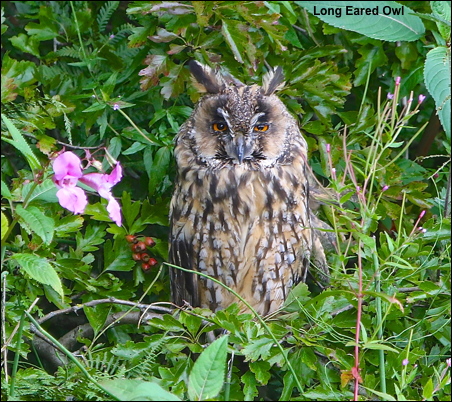
In last years blog of the 9th October there is a photo of a roosting Long Eared Owl amongst Himalayan Balsam. I came across the roosting Owl in a remote Pennine valley and never thought I would ever find one again in such vegetation. This week I walked through this valley again and there in the same vegetation was a roosting Long Eared Owl. The question of course is whether this years bird is the same one as last year for it seems a strange coincidence that another Long Eared Owl would roost this year only feet away from where last years Owl was found. Both Owls are in this years gallery for comparison. click here
During the last week Autumn migration has started with Swallows, Wheatears , Skylarks and Grey Wagtails all heading south-west and Kingfishers now returning to our local canal. An east wind will soon bring in the first autumn thrushes.
September 8, 2017 at 7:32 pm
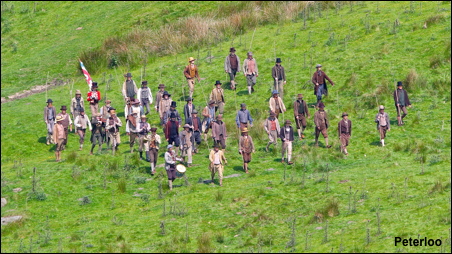
In all the years I have been filming birds in the Pennines I have been disturbed on many occasions but what happened in June this year was quite unique. I had been sat in my hide in a peaceful Oak wood, deep in the Pennines, filming a pair of Green Woodpeckers as they fed their young (see blog 8th July). It was a delightful place to be with the Woodpeckers appearing every hour and providing me with plenty of good photos. Suddenly the Woodpeckers gave alarm calls and drifting through the wood was the sound of a marching band! If that was not bad enough the same notes were repeated incessantly for the next two hours! Eventually I had had enough and I walked out of the wood to the edge of the moor to see what was going on. There in front of me was a scene from nearly two hundred years ago as close on fifty people marched up the valley complete with a vast production team and drones overhead. They were filming next years blockbuster film on the Manchester Peterloo massacre of nearly two hundred years ago. So when you sit and watch this film next year and the marching scene is shown spare a thought for the frustrated photographer sat in the Oak wood nearby and not knowing what was going on!
This weekend we celebrate the tenth anniversary of my weekly blog. For the gallery this week I have included my ten favourite photos out of the fifteen thousand that I have taken in the last decade. It would be nice to think that I will be doing this again in another ten years but realistically I would expect that during that time I will have poured a glass of Laphroaig and disappeared into an Islay sunset!! Click here for my ten favourite photos
September 3, 2017 at 7:14 pm
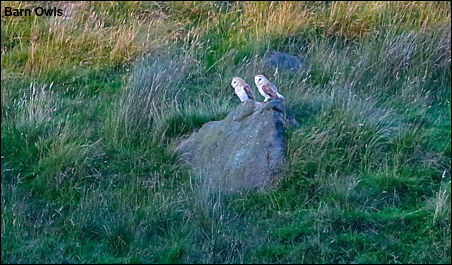
This weeks photo is of two recently fledged Barn Owls about to take their first evening flight. It is only a record shot taken from the car more than 400 yards away and these two were part of a brood of six that fledged from a barn just a few yards away. The significance of the photo is that with these Barn Owls I have, in the last two months, now photographed all five species of Pennine Owls something I have never done in one season in forty seven years before.
Once young Barn Owls can fly they are still fed by the male for up to six weeks, usually on top of the dry-stone walls that surround the barn. Three years ago I spent many weeks trying to capture the illusive food-pass from the male to the young. On many nights the young, the hide and flash were in the wrong place but on other nights it all came good and this weeks gallery shows some of the more successful shots. The main problem is that it is not possible to re-focus once it has gone dark and you are only left with silhouettes in your view finder. The male Owl is the one with the dirty face! Click here






